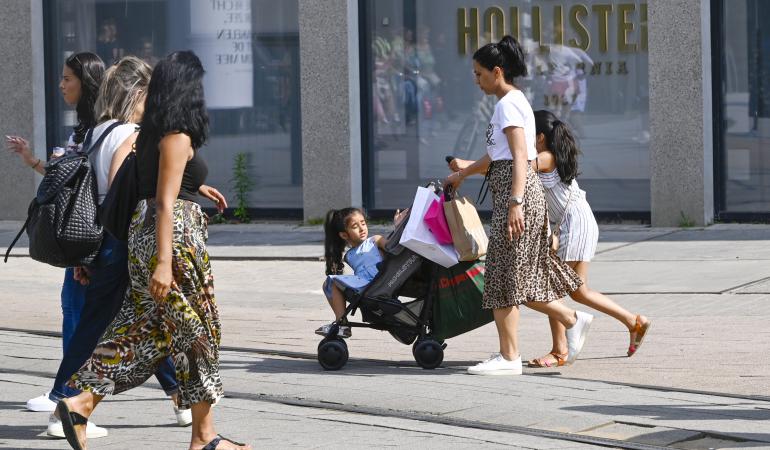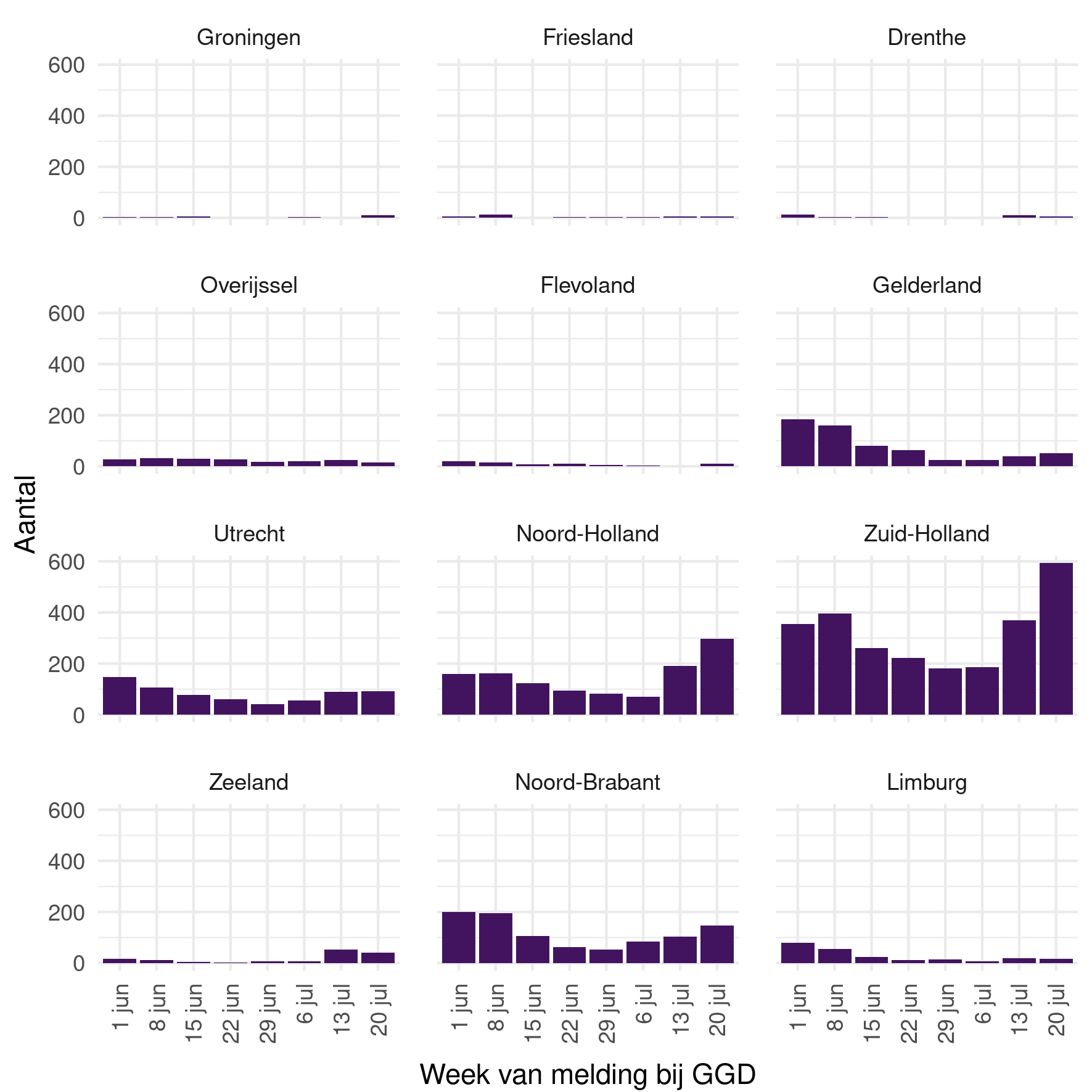
1,329 new COVID-19 infections were reported over the past week. That is 342 more confirmed cases reported than the week before that, when 987 new COVID-19 infections were reported.
The virus continues to spread in the Netherlands. The reproduction number (R) indicates how many other people are infected on average by one person who has the novel coronavirus. The reproduction number is 1.40. This means that 100 people who are infected with the novel coronavirus will collectively infect another 140 people.
Although the number is slightly higher than the 1.29 reported last week, the upper limit of the bandwidth has hardly changed. This indicates that the situation has not changed much over the past week.
There are regional differences in the number of confirmed cases (see figure 1). This is also visible in the total number of tests performed in the test lanes per 100,000 inhabitants and the percentage of positive tests per region. (see epidemiological report - only in Dutch) The provinces of South Holland and North Holland in particular show an increase in the number of confirmed cases. The number of new infections remains stable and low in the provinces of Friesland, Groningen, Drenthe and Flevoland.
Figure 1 Number of confirmed cases per region
In addition to an increase in the number of infections, there is also a shift in age structure. In recent weeks, we have seen a stronger increase among younger age groups than among older age groups. (see figure 2)
Figure 2 number of infections among age groups
More testing, but percentage of positive tests remains stable
Between 20 July and 26 July, 111,764 people* were tested at the GGD test sites. That is an increase of more than 22,878 tests compared to the week before, when 88,886 tests were administered. The percentage of people who tested positive remained the same at 1.0%.
*Source: GGD-GHOR
Number of infection clusters is increasing
Spread throughout the country, there is an increase in the number of small local outbreaks (clusters) of three or more related infections. There are currently 133 active COVID-19 clusters in the Netherlands. The average size of these clusters is 5.9 people (range: 3-23). Most infections still take place within the home. The number of infection clusters due to contact with other family members, friends, at parties, in the workplace or other leisure activities is increasing.
Source and contact tracing
The results of source and contact tracing are now available up to week 29 (6 June to 19 July). Among the close contacts identified in week 29, 354 COVID-19 infections were identified (10.9%). The percentage of contacts that were infected varied between household members and other close contacts. 17.9% of the household members turned out to be infected with the novel coronavirus. 6.8% of the other close contacts were infected.
To prevent the virus from continuing to spread, it is important for people to comply with the measures: Keep your distance, and stay home and get tested if you have symptoms. Wash your hands, sneeze and cough into your elbow, and use paper tissues.

